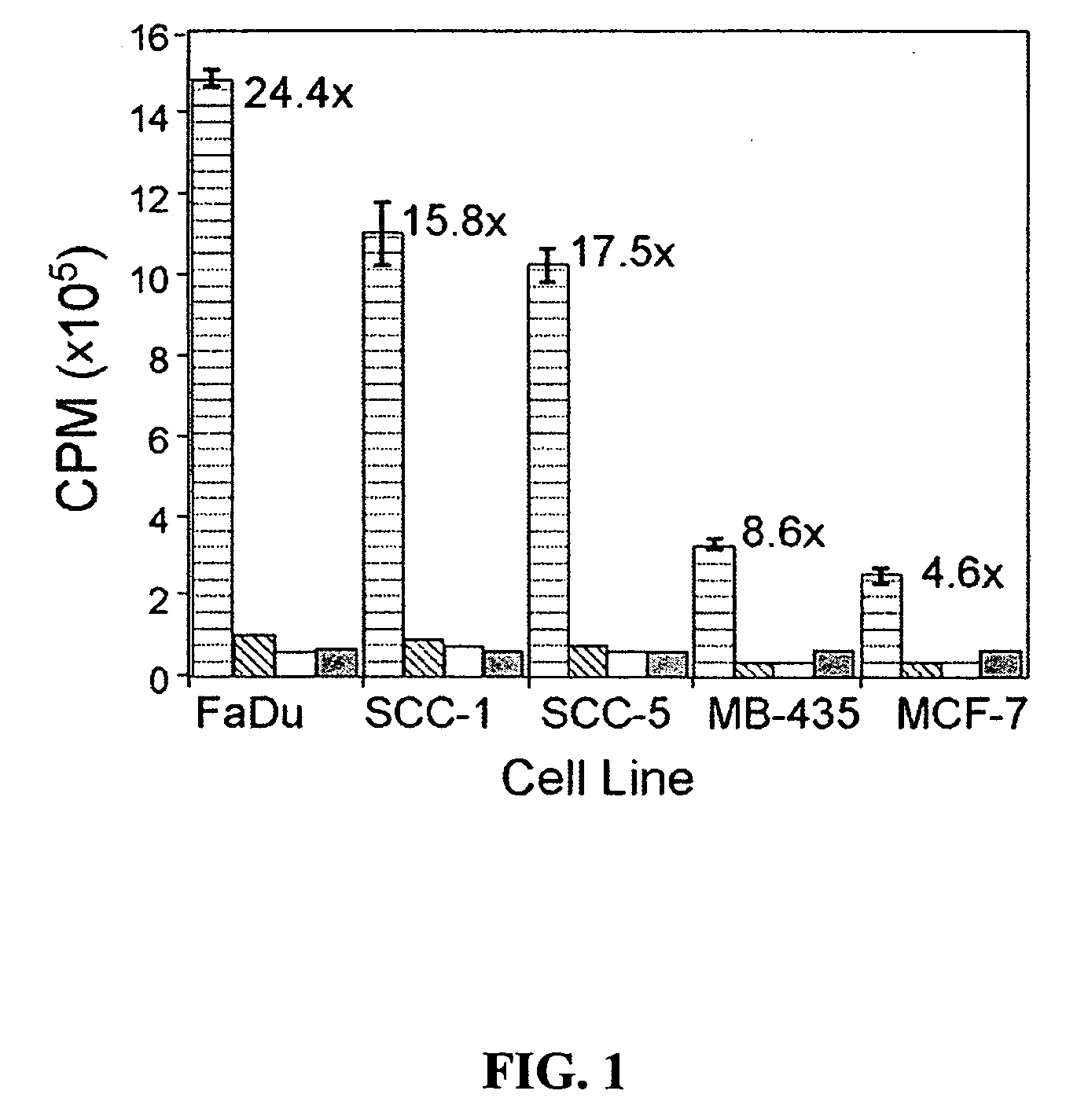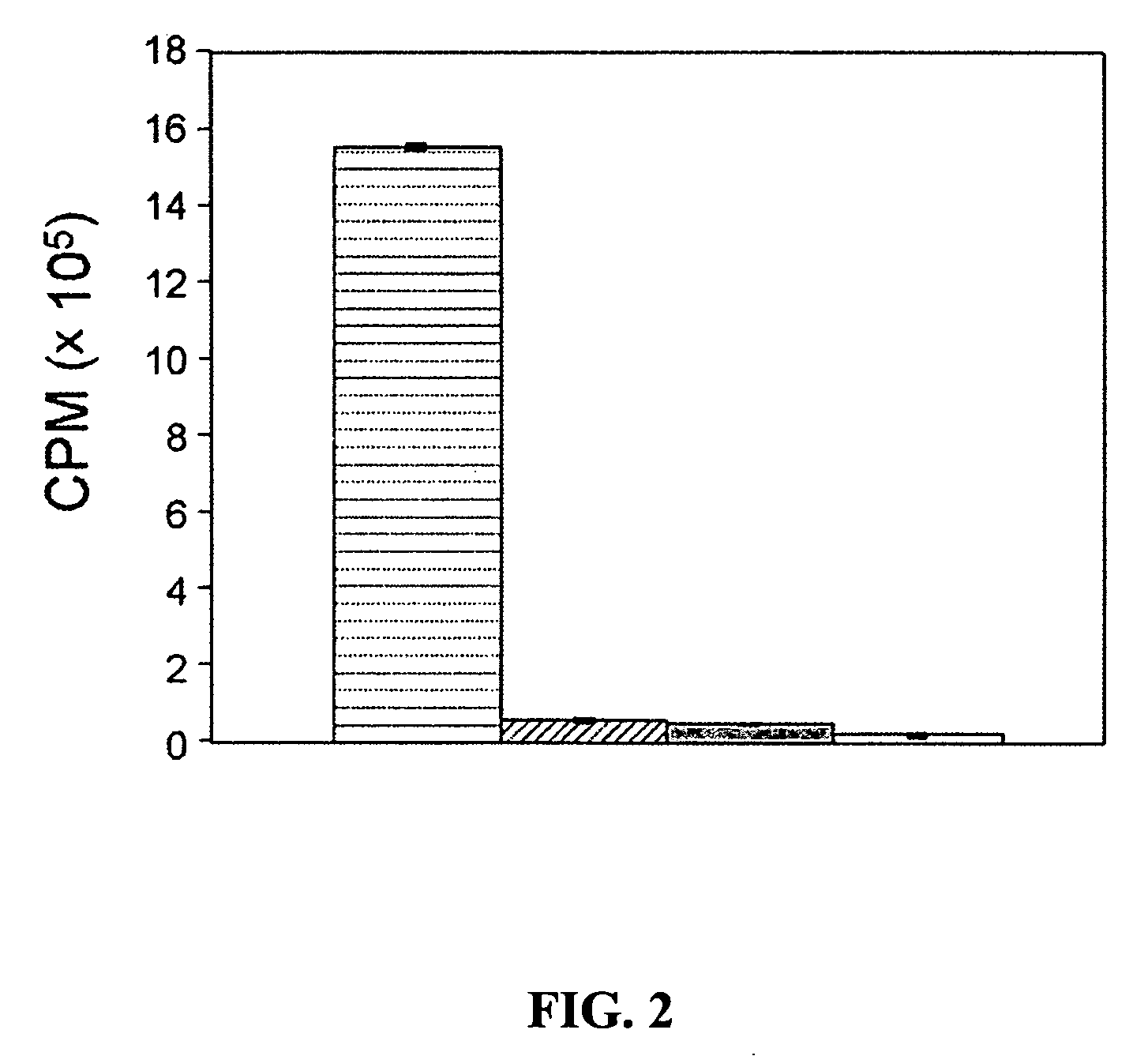Use of the sodium iodine symporter to effect uptake of iodine
a technology of sodium iodine and symporter, which is applied in the field of molecular biology and gene therapy, can solve the problems of cosmetic deformity, significant mortality, and inability to significantly improve the survival rate in the past 30 years, and achieves significant survival rate, functional impairment, and significant mortality
- Summary
- Abstract
- Description
- Claims
- Application Information
AI Technical Summary
Benefits of technology
Problems solved by technology
Method used
Image
Examples
example 1
Materials and Methods
[0189] Cell Culture. The cell lines MCF-7, MDA-MB-435, and FaDu were obtained from the American Type Culture Collection (Manassas, Va.). MCF-7 cells were maintained in RPMI 1640 media with 10% fetal bovine serum and 100 U / ml penicillin / streptomycin. All other cell lines were maintained in high glucose Dulbecco's modified Eagle's medium supplemented to a final concentration of 10% fetal bovine serum, 0.1 mM non-essential amino acids, 2 mM glutamine, and 100 U / mL penicillin / streptomycin (Gibco, Grand Island, N.Y.). Cells were cultured at 37° C. in a 5% CO2 atmosphere. To create stable transfectants, FaDu cells were transfected with 1 μg pcDNA3 plasmid containing full-length human NIS (hNIS) using Superfect transfection reagent (Qiagen, Valencia, Calif.). After 48 hours, cells were trypsinized and replated in complete medium containing 800 μg / mL G418. Stable clones were isolated and characterized for their ability to accumulate radioiodine.
[0190] Preparation of a...
example 2
Results
[0196] Radioiodide Uptake and Efflux. After 1 hour incubation with [125I] iodide, Ad-hNIS transduced cell lines demonstrated increased radioiodide accumulation compared with either Ad-Bgl II-transduced or control cells. The HNSCC cell line FaDu exhibited the highest level of [125I] iodide uptake, accumulating radioiodide to levels roughly 25 times that of control cells. Interestingly, all of the HNSCC cell lines tested were able to concentrate radioiodide to higher levels than breast carcinoma cell lines did. Perchlorate inhibited iodide accumulation. Thus, the observed iodide uptake was mediated specifically by NIS.
[0197] In all tested cell lines, iodide efflux plateaued by 3 hours after [125I] iodide washout. However, the terminal levels of iodide retention differed significantly among the different lines. The HNSCC cells lines demonstrated significantly higher levels of retention than did the breast carcinoma cell lines. FaDu, SCC-1, and SCC-5 exhibited 68%, 48%, and 36%...
PUM
| Property | Measurement | Unit |
|---|---|---|
| time | aaaaa | aaaaa |
| diameter | aaaaa | aaaaa |
| volume | aaaaa | aaaaa |
Abstract
Description
Claims
Application Information
 Login to View More
Login to View More - R&D
- Intellectual Property
- Life Sciences
- Materials
- Tech Scout
- Unparalleled Data Quality
- Higher Quality Content
- 60% Fewer Hallucinations
Browse by: Latest US Patents, China's latest patents, Technical Efficacy Thesaurus, Application Domain, Technology Topic, Popular Technical Reports.
© 2025 PatSnap. All rights reserved.Legal|Privacy policy|Modern Slavery Act Transparency Statement|Sitemap|About US| Contact US: help@patsnap.com



